
Kansas City
Keystone Species
These native plants are the “most valuable players” in our natural communities and:
• Host largest populations of native caterpillars and bee specialists,
• Are generally easy to find at native plant nurseries and sales,
• And are suitable for habitat gardening on small or large scales in the Kansas City region.
Why Keystones?
Native flora and fauna have developed intricate relationships over millennia. Native plants provide food, shelter, and places to rear young for our native fauna. Keystone plant species support most caterpillar species and specialist native bee species. They are the “Most Valuable Players” in our natural communities. Without regional keystone plants, wildlife would decline or cease to exist.
Support pollinators by providing food sources throughout the growing season. Beyond pollen and nectar, keystone species support wildlife as its foliage feeds larval insects.
The Kansas City area spans two ecoregions – The Great Plains and Eastern Temperate Forests. This list was curated by and with our community in mind because what you plant matters!
From the tallest trees to the smallest groundcover plants, keystone species are everywhere! Oaks, Maples, and Birch are a few native trees that support hundreds of local wildlife species. Native Violets are abundant and create a lush groundcover. They host dozens of native Lepidoptera species, like the Great Spangled Fritillary butterfly.
Shrink your lawn and expand the benefits with shady soft landings beneath mature trees. Native habitat gardens allow beneficial insects to complete their life cycles. This in turn supports others, like songbirds, who rely on caterpillars to feed their young.
Herbaceous Perennials
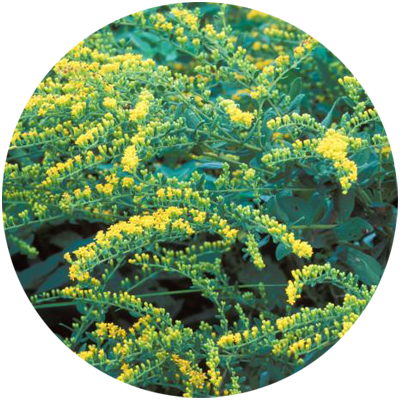
Cliff Goldenrod
Solidago drummondii
Supports 97 caterpillar species/56 bee specialists
Arching shape is great for terraces and curbs.
Bloom: August – September
Height: 12-36 inches
Spread: 12-36 inches
Sun: full sun
Moisture: dry to average
Wildlife: host plant; pollinators; birds eat seed
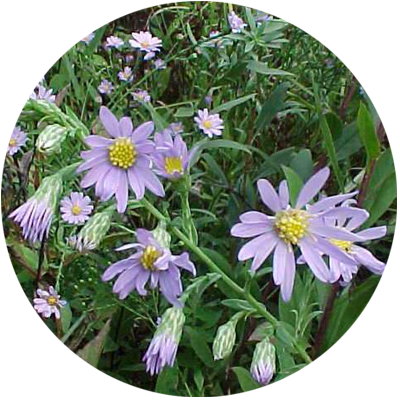
Smooth Aster
Symphyotrichum laeve
Supports 100 caterpillars/33 bee specialists
Light purple blooms with yellow centers
Bloom: September – October
Height: 24-48 inches
Spread: 12-24 inches
Sun: full sun
Moisture: dry to average
Wildlife: host plant; pollinators

Star Tickseed
Coreopsis pubescens
Supports 7 caterpillars/22 bee specialists
Long bloomer that tolerates dry rocky soil;
great for container gardening
Bloom: June – September
Height: 24-48 inches
Spread: 12-36 inches
Sun: full sun to light shade
Moisture: dry to average
Wildlife: host plant; pollinators; birds eat seed
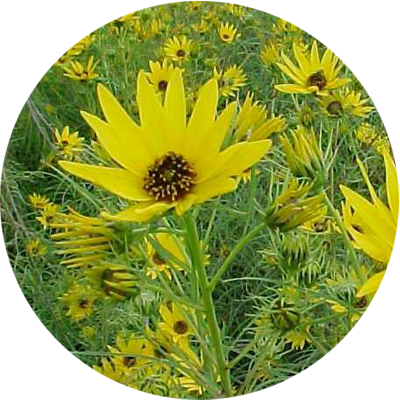
Willowleaf Sunflower
Helianthus salicifolius
Supports 73 caterpillar species/89 bee specialists
Fine foliage: Cut plants back in late May for shorter
height and more blooms.
Bloom: September – October
Height: 36-120 inches
Spread: 12-36 inches
Sun: full sun
Moisture: average
Wildlife: host plant; pollinators; birds eat seed

Zig-zag Goldenrod
Solidago flexicaulis
Supports 97 caterpillar species/56 bee specialists
Sunny fall bloomer that is clay and deer tolerant
Bloom: July – September
Height: 12-36 inches
Spread: 12-36 inches
Sun: full sun to light shade
Moisture: average
Wildlife: host plant; pollinators
Shrubs and Small Trees
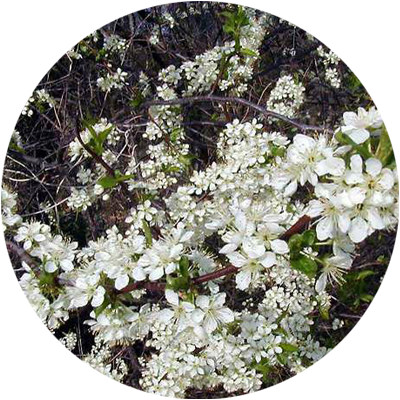
American Plum
Prunus americana
Supports 340 caterpillar species
Dreamy white blooms followed by delicious fruits
Bloom: March
Height: 15-25 feet
Spread: 15-25 feet
Sun: full sun to light shade
Moisture: dry to average
Wildlife: host plant; pollinators; birds
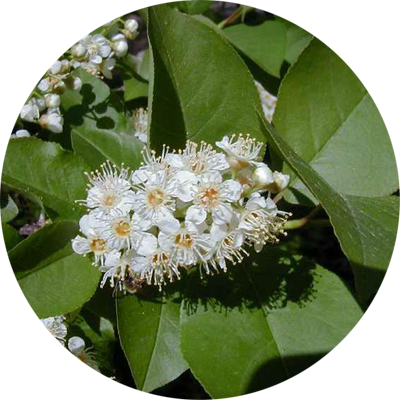
Chokecherry
Prunus virginiana
Supports 340 caterpillar species
Showy white flowers followed by pea-sized berries
Bloom: September – October
Height: 20-30 feet
Spread: 15-20 feet
Sun: full sun to light shade
Moisture: dry to average
Wildlife: host plant; pollinators; birds eat fruit

Flowering Dogwood
Cornus florida
Supports 65 caterpillar species/4 bee specialists
Striking white flowers in spring and bright fall foliage
Bloom: April – May
Height: 15-30 feet
Spread: 15-30 feet
Sun: full sun to light shade
Moisture: average
Wildlife: host plant; pollinators; birds
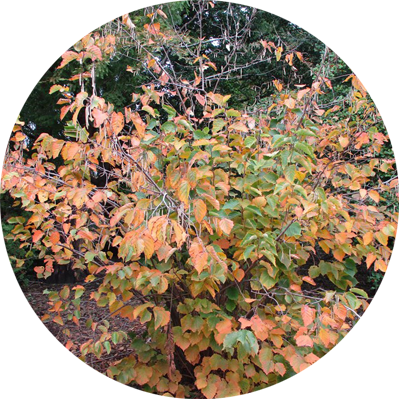
Hazelnut
Corylus americana
Supports 108 caterpillar species
Multi-stemmed shrub with catkins in spring followed by brilliant fall foliage
Bloom: March – April
Height: 10-16 feet
Spread: 8-13 feet
Sun: full sun to light shade
Moisture: average
Wildlife: host plant; wildlife eats nuts
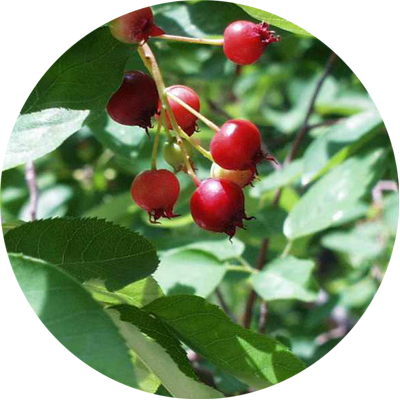
Serviceberry
Amelanchier arborea
Supports 92 caterpillar species
Stunning white flowers followed by edible berries and brilliant fall foliage
Bloom: March – April
Height: 15-25 feet
Spread: 15-25 feet
Sun: full sun to light shade
Moisture: average
Wildlife: host plant; pollinators; birds love the fruit
More Options
Top three genera of herbaceous perennials that offer largest wildlife support in our region:
Solidago • Symphyotrichum • Helianthus
Top three genera of trees that offer largest wildlife support in our region:
Quercus • Prunus • Betula
If these species aren’t available, talk to your local native plant nursery for other species in these genera to support wildlife.